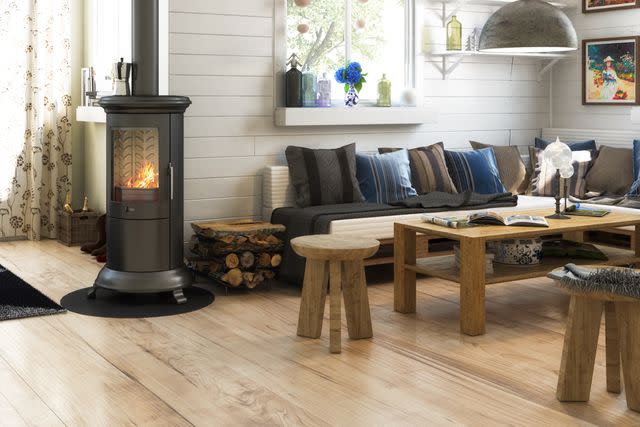How to Clean Laminate Floors the Right Way
Knowing how to clean laminate floors correctly will keep the material free of scratches, scuffs, and warping.
Laminate is a popular alternative to wood flooring because the material looks similar in appearance, is more affordable, and is relatively low maintenance. While laminate doesn't need to be polished or resurfaced, it does require some attention to ensure it stays in peak condition. Laminate flooring can be damaged by certain chemicals and excess water, so knowing how to clean the material is an essential part of upkeep. But with the proper cleaning supplies, your laminate floors will look their best for years to come.
Meet the Expert
Kathy Cohoon, director of franchise operations of Two Maids
Marla Mock, president of Molly Maid, a Neighborly company
Related: How to Clean Hardwood Floors the Right Way

Marc_Osborne / GETTY IMAGES
How Often to Clean Laminate Floors
Floors quickly build up with crumbs, dirt, and other debris throughout the day. Spot cleaning and sweeping daily will keep laminate shining and free of debris that may scratch the surface, says Kathy Cohoon, the director of franchise operations of Two Maids. In addition to daily maintenance, you should also deep clean your laminate floors every two weeks.
Materials Needed
Make sure you have these materials on hand when cleaning your laminate floors.
Vacuum cleaner
Soft-bristled brush
Microfiber mop
Bucket
Distilled white vinegar
Baking soda
Hot water
Mild dish soap
Microfiber towels
How to Clean Laminate Floors
Avoid over saturating your floors with water is essential when cleaning laminate, as it can damage the surface. Also, be sure to use a microfiber mop, not a sponge mop. "A sponge mop pushes dirty water into grout lines, making them harder to clean later," says Marla Mock, president of Molly Maid.
Use a soft-bristled broom, a dry microfiber mop, or a vacuum cleaner with the brush attachment to remove dirt and debris.
In a bucket, mix a solution of 1 gallon hot water, 1 cup vinegar, and a few drops of dish soap.
Using a microfiber mop, mop the floor from back to front. Assess the room and follow a path that ensures you end at an exit.
Use a soft-bristled brush to remove stubborn dirt, or in high traffic areas.
Dump out the mixture and refill your bucket with clean water.
Mop the floor again using the clean, damp mop to remove any residue.
Allow the floor to dry thoroughly and ensure there is no standing water on the surface.
How to Remove Scuffs From Laminate Floors
Scuffs on floors are typically easier to remove when they’re fresh. "For scuffs and small marks, you can use a microfiber cloth and buff it out in circular motions," says Cohoon. "Be sure to sweep away debris, hair, and dust before buffing so you don’t accidentally scratch the floor."
How to Remove Stains From Laminate Floors
While laminate is naturally stain-resistant, if you encounter any stubborn spots, you can remove them with a mixture of vinegar and water, says Cohoon.
In a bucket, mix a solution of lukewarm water with a splash of vinegar.
Dip a microfiber cloth in the solution and wring it out well.
Use the cloth to buff away any stains.
How to Maintain Laminate Floors
Although laminate floors are low maintenance, there are some important tips to keep in mind to ensure they stay in peak condition.
Avoid getting laminate floors overly wet as it can warp the flooring and cause damage over time. "If you have a lot of laminate flooring make sure you get a mop for laminate that won’t hold too much water," says Mock.
Don't use harsh chemicals like bleach to deep clean floors or get rid of stains. "These are often too strong for laminate and can damage the flooring as well," says Mock.
Upkeep is the best way to keep laminate floors looking great and feeling clean, says Cohoon. To do so, be sure to spot clean and sweep regularly, as well as treat stains and spills right away to avoid longterm damage.
Don't use too much of your cleaning agent when caring for laminate floors. "Avoid using wax or polish as well as both will create residue," says Cohoon.
Read the original article on Martha Stewart.

